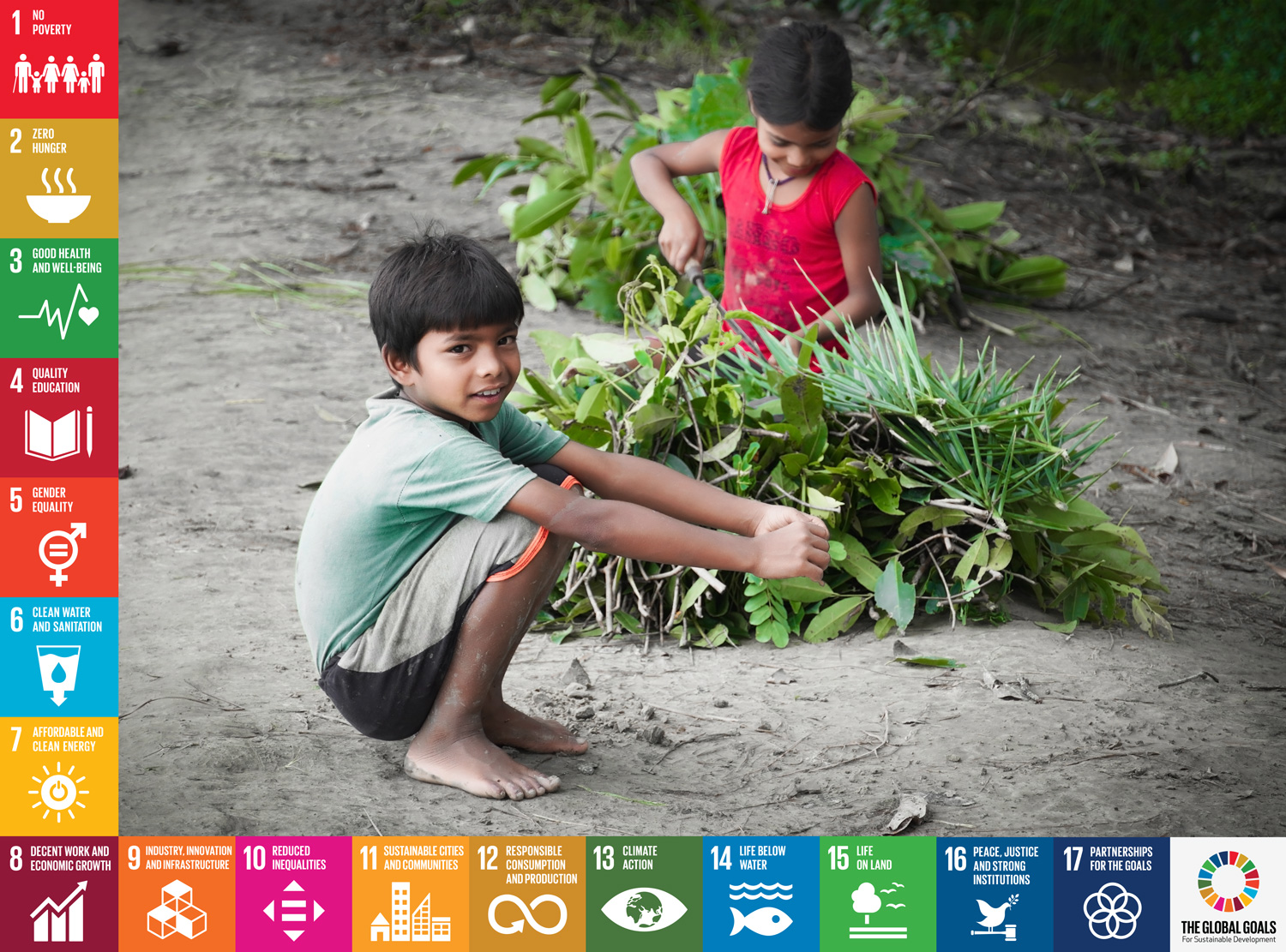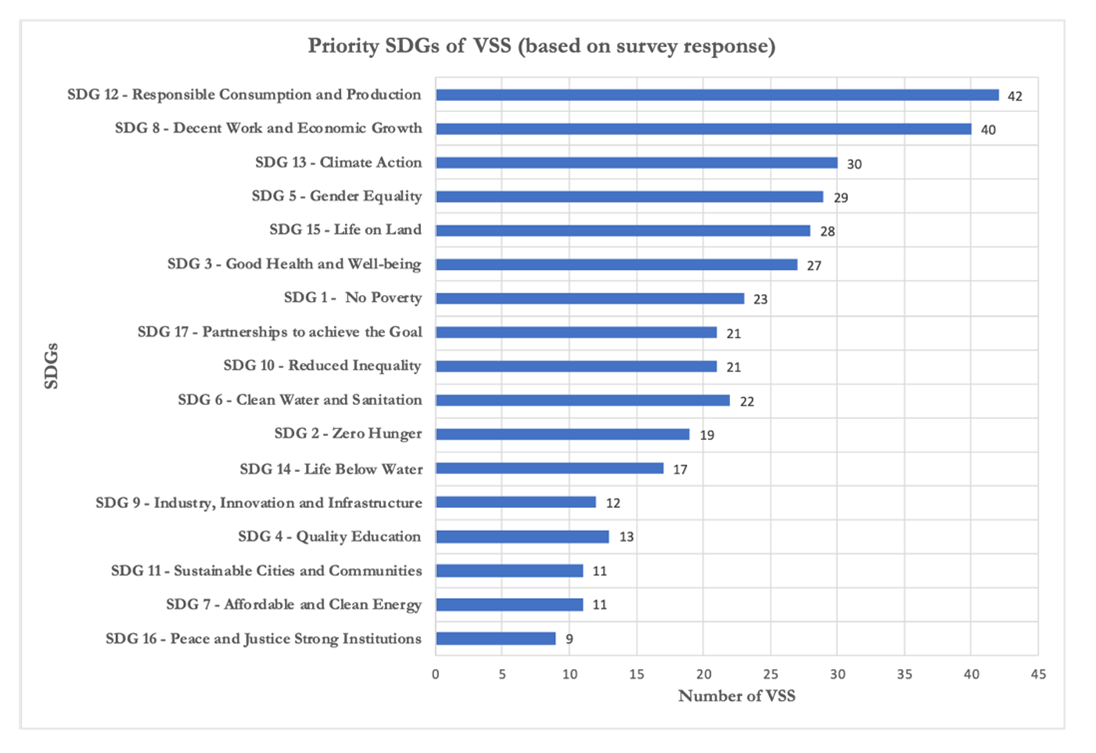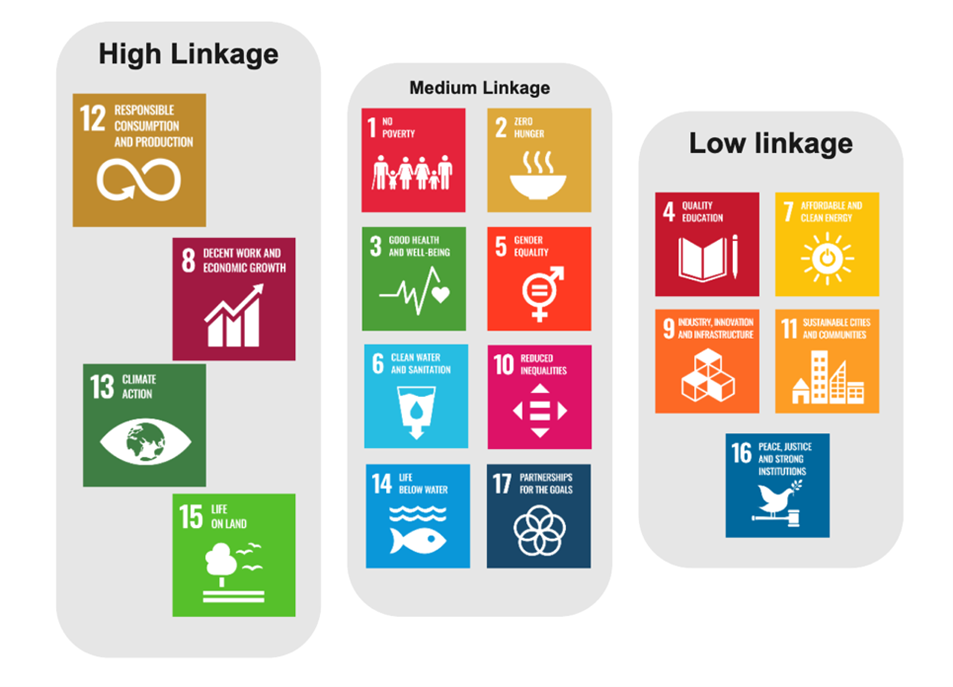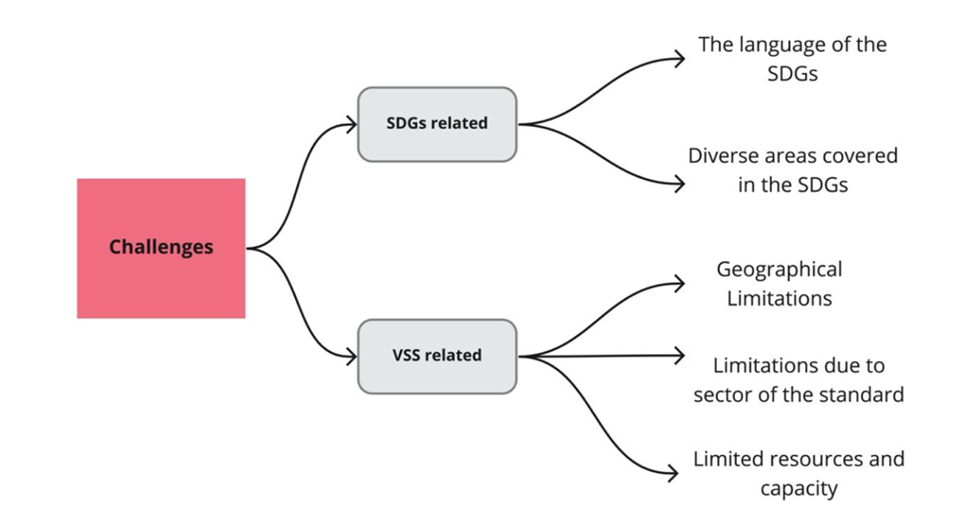Voluntary Sustainability Standards and the SDGs: Is there a connection?

The United Nations adopted the 2030 Sustainable Development Agenda[1] in 2017, following a comprehensive and inclusive process. It contained the 17 Sustainable Development Goals or the SGDs, which are aimed to be attained by 2030. These goals cover the most pertinent issues across the globe, ranging from poverty to climate change. They are non-binding and non-authoritative and lay forth a unique approach to governance through the goals.
With less than ten years remaining to achieve the SDGs, there is a need for different types of actors to show leadership for the goals. To attain this ambitious agenda, the UN has emphasized the critical role that businesses and civil societies can play in advancing sustainable development, for example, via adopting responsible business practices like incorporating sustainable production methods within the supply chain.
Voluntary Sustainability Standards (VSS) exercise influence with global scope across many different commodity/supply chains as they provide mechanisms to make informed choices (for buyers) and to capture market value for sustainability-related credence goods (for producers/retailers) across value chains. Through this, VSS also offers ‘arenas for agenda setting’ where stakeholders affecting/affected by a certain value chain come together to define relevant development targets. Thus, VSS organisations could be a potential pertinent actor in providing ‘leadership for the goals’.
Given VSS’s broad relationship to sustainability, it becomes evident that there could be linkages between VSS and the SDGs. The extant literature reveals that even though many VSS were established before the SDGs, some exhibit overlaps with them at the level of the criteria for certification. For example, in a recent study on 232 VSS[2], the results reflected ‘significant linkages’ between VSS criteria and the SDGs. But, due to the timing and complexity of criteria development/revision, the continuous development of these, and the recognition that VSS organizations/secretariats typically provide services that extend beyond the criteria (assurance, capacity building, etc.), it is also interesting to explore how VSS are currently incorporating SDG perspectives also in other aspects of their work, so we get a richer understanding both of what SDGs these organizations provide leadership on, and how they view their role and ability to provide this type of leadership.
This phenomenon was studied by Rupal Verma as a part of her Master’s thesis for her Erasmus Mundus Master’s degree in Environmental Science, Policy, and Management. The thesis thus addressed the above-mentioned research gaps, identified the current key linkages between VSS and the SDGs, and elaborated on what drives these linkages and the role that VSS bodies envision for the future of this engagement. Three key focus questions were:
- Which SDGs do VSS contribute to, beyond their formal requirements for securing a certification?
- Why do VSS bodies choose to engage with SDGs?
- How do representatives of these VSS bodies see their own role/role of the standard body in contributing to different SDGs and a transition to sustainable development?
The research adopted an exploratory approach. To get an overview or an overarching picture of what SDGs are linked to the VSS beyond the requirements, a content analysis was done on a large set (n=270) of VSS websites. To further capture the link of VSS with the SDGs, a survey was conducted among leading VSS organisations, which was responded to by 80 VSS bodies, followed by an interview with ten leading VSSs representing sectors ranging from agriculture to electronics.
Which SDGs do VSS contribute to, beyond their formal requirements for securing a certification?
The results indicated that the leading SDGs actively linked to the studied VSS were SDG 8-Decent Work and Economic Growth, and SDG 12-Responsible Production and Consumption. Significant linkages were also observed with SDG 15-Life on Land, and SDG 13-Climate Change.

Based on the results of the survey and content analysis of VSS websites, a classification proposed for the VSS interaction with the SDGs is: High-Linkage, Medium-Linkage, and Low-Linkage SDGs. This categorization could be beneficial for the researchers and the practitioners. VSS organizations could benefit from knowing where they need to make more efforts to advance the 2030 Agenda or communicate more on their contributions to specific SDGs. Overall, there is a case for VSS to improve their contributions, especially towards a certain set of SDGs, or increase their reporting if they are already contributing, and provide more transparent information.

Why do VSS bodies choose to engage with SDGs?
Firstly, the experience of having contributed to the MDGs was highlighted as an inspiration to engage with the SDGs. Some VSS organizations also made efforts to adapt to the SDGs and modify their functioning and/or requirements post-2015. i.e., after the UN released the 2030 Agenda. Other motivating factors included collaboration, the need to establish legitimacy and credibility, external pressure from consumers and the market push, escalated/more accessible access to financing, SDGs as a benchmarking tool, and communication purposes. Each of these factors was brought forth by VSS organization leaders interviewed from almost all VSS sectors. Though the results might not apply to all VSS, they provide an overview and an insight into the driving factors for the VSS-SDG engagement.
How do representatives of these VSS bodies see their own role/role of the standard schemes in contributing to different SDGs and a transition to sustainable development?
The research highlighted that VSS which have a governance system in place and have a leadership more focused or aware of the SDGs, are inclined to contribute to or align with the SDGs. A push towards the SDGs coming from top management is undoubtedly one factor that influences the engagement even for the future. In addition, the question also shows that leaders mostly see the VSS organizations as being imperative to the achievement of the 2030 Agenda and believe that VSS could play a crucial role, especially given their nature of operation across supply chains. However, it must also be pointed out that through the discussions, it was also clearly mentioned that for VSS to engage with the SDGs, there are also a considerable number of challenges.

Conclusion:
The research highlights the overall picture of how VSS are already aligning with and contributing to advancing the SDGs. From the analysis, it is clear that ‘credible standards’ can be crucial for attaining the SDGs and can be adopted by businesses and governments to further the SDG agenda. Considering that, the VSS bodies, besides mentioning what SDGs are their focus SDGs, need to provide examples of cases where their claimed linkage happened also more actively. There needs to be more transparency in the working of VSS towards the SDGs and clearer practices that help them, in the true sense, to attain credibility by aligning with the SDGs.
This is to also say that the alignment of VSS with the SDGs is just one part of the bigger picture and the obvious alignment of VSS with the SDGs can be used to businesses advantage to also attain the SDGs, provided there is credibility to these claims and there is a better understanding of how they undertake said programs on-ground. A greater understanding of these linkages and a more elaborate description by the VSS bodies is needed also because even for the SGDs where there are strong linkages, it cannot be necessarily translated into a more effective impact. Thus, an impact analysis would be an important next step.
Here you can download the whole thesis:
https://lup.lub.lu.se/student-papers/search/publication/9061725